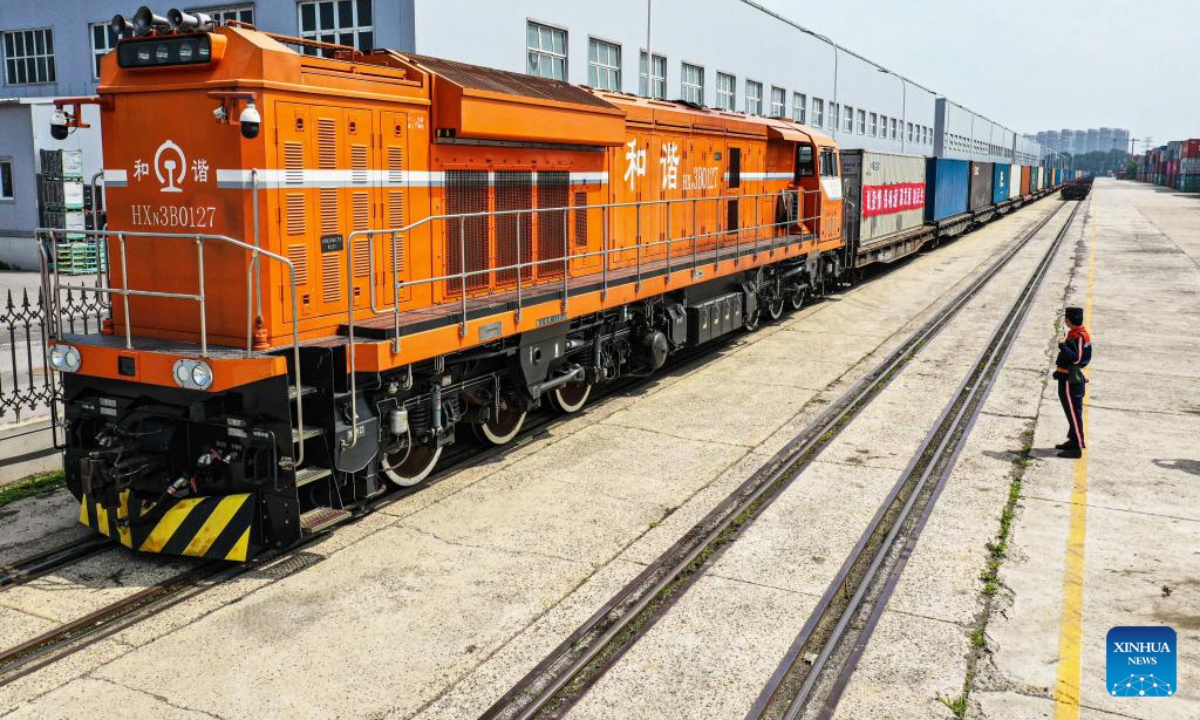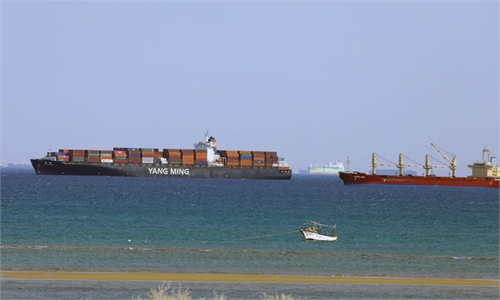
In this aerial photo, a China-Europe freight train is about to depart from the Shenyang East Railway Station in Shenyang, northeast China's Liaoning Province, June 16, 2022. Photo:Xinhua
The number of China-Europe cargo trains grew 11 percent year-on-year in July, while the number of containers delivered increased 12 percent, as the cross-continental freight train services continue to show resilience despite challenges, according to latest data on Tuesday.
The cargo train saw continuous upward momentum, with its performance in July being particularly notable, with 1,517 trains dispatched and 149,000 standard containers of goods transported, up 11 percent and 12 percent, respectively, both at the highest levels since the service was launched, China Railway said in a statement sent to the Global Times on Tuesday.
In the first seven months of 2022, the number of trains dispatched grew 3 percent year-on-year to 8,990 and cargo delivered increased by 4 percent, according to the statement.
The growth also showed that the transport channel played a more prominent role in securing smooth trade flows between China and Europe, amid global logistics hurdles, port congestion and geopolitical volatility, analysts noted.
The cross-border train service is backed up by government support measures, including the opening of new transportation hubs in booming trade centers such as Xi'an in Northwest China's Shaanxi and Southwest China's Chongqing to European cities.
By expanding trade channels, especially in connection with ocean freight, an unprecedented cargo delivery network has been formed, with the China-Europe freight train now able to reach 24 countries and 200 cities in Europe, according to China Railway.
Through strengthening the line's transport capacity and efficiency by exploring new categories of goods for import and utilizing outbound container management, the return train service has also seen growth, another important reflection of the resilient and balanced train service under policy support.
The ratio of return trains and outbound trains stands at 88 percent, a year-on-year increase of 6 percentage points.
Infrastructure upgrades at a number of ports have also driven up trade flows. For example, several major ports such as Khorgos port in Northwest China's Xinjiang region and Manzhouli port in North China's Inner Mongolia have added an arrival and departure line and a reloading line to increase the import container reloading capacity by three to four trains per day.
Driven by such moves, from January to July, the average daily volume of China-Europe freight trains in the west, central and east passages increased by 18.3 percent, 17.7 percent and 36.5 percent, respectively, compared with 2020, prior to capacity expansion and reconstruction.
China Railway will continue to give full play to the strategic role of the China-Europe freight train by strengthening port facility construction, and international cooperation in upgrading the efficiency of the train service to further boost the economic and trade development of China and other countries, a representative from China Railway said in the statement.
Global Times


